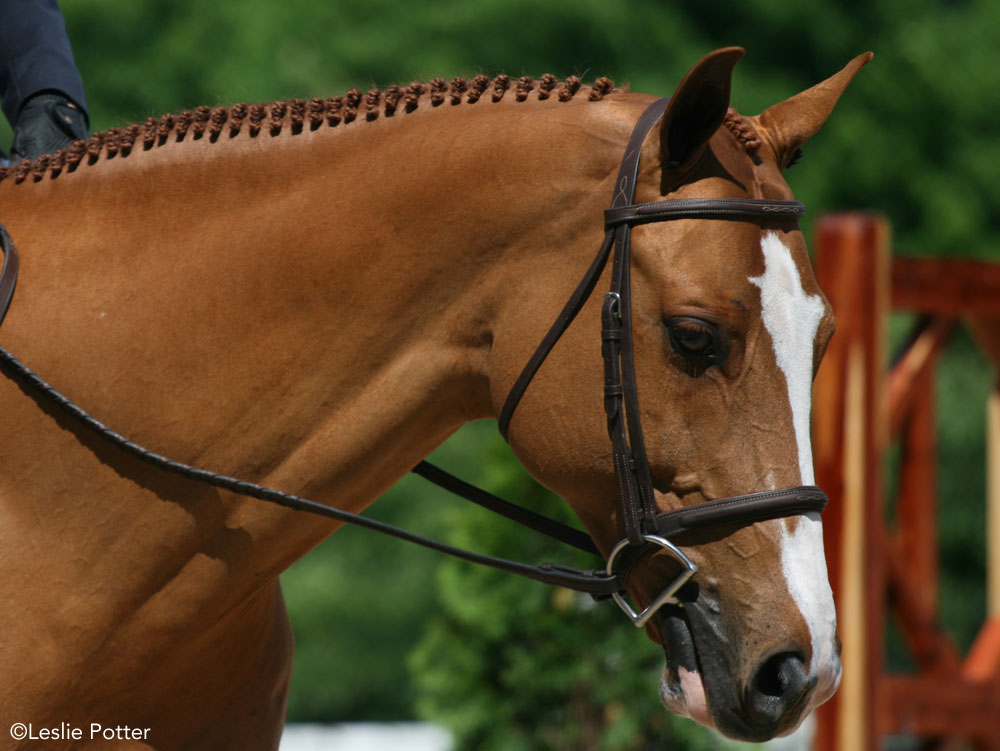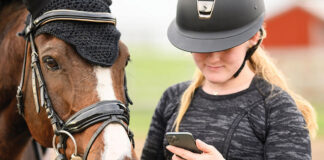Selecting the right bit for your horse can be overwhelming, especially when you consider all the varieties that are dazzlingly displayed in catalogs and at tack stores. To help you differentiate between D-rings and eggbutts, Waterfords and Weymouths, we’ve prepared an online bit guide that reveals information about the most common styles of bits as well as some of the more creative ones. Before you begin browsing, here are a few tips to keep in mind.

A snaffle is recognizable by the rings attached to either side of the mouthpiece. The reins attach to the rings and guide the horse through direct contact. For example, when you pull on the right rein the horse turns right in response to pressure on the corners of its mouth. This teaches the horse to bend laterally. When working on downward transitions and halts, snaffles exert pressure on the bars of the horse’s mouth, causing the horse to flex at the poll and bend vertically.

In contrast, curb bits work on leverage. Reins are attached to shanks, the vertical bars attached to the bit rings. When you pull back on the reins, the shanks create a lever action and pressure is exerted on the horse’s lower jaw, the bars of the mouth and the poll via the crownpiece of the bridle.
In general, a longer shank translates into more leverage and hence a more severe bit. Pressure is also felt on the horse’s chin, thanks to the curb strap or curb chain. Curb bits encourage the horse to lower their head and flex at the poll. Though curb bits can be ridden with two hands, in western riding the curb permits the rider to guide their horse through neck reining.
Snaffles and curbs are available in a wide range of mouthpieces, and each style—from smooth to twisted and low or high ports—provides a certain degree of severity. That’s why it’s important to choose a bit wisely, because once a horse’s mouth has become dull or sore due to a strong bit in rough hands, it’s difficult to re-school the horse to become light and responsive once again.
Snaffle Bits | |||||
| Dr. Bristol |  French Link |  Mullen Mouth | |||
 Eggbutt Snaffle |  D-Ring Snaffle |  Rubber Mouth | |||
 Loose Ring |  Full-Cheek |  Key Bit | |||
 Waterford |  Twisted Wire |  Wire-Wrapped | |||
 Non-Pinch Bit |  Chain Mouthpiece Bit |  Gag Bit | |||
Leverage Bits | |||||
 High Port Curb |  Weymouth |  Tom Thumb | |||
 Pelham |  Kimberwick |  Correction Bit | |||
 Grazing Bit |  Hinged Port |  Western Gag | |||
 Spade Bit | |||||
Other Bits | |||||
 Chifney | |||||






Thanks for the great info!
Well thank you for the explanations on the bits. When I got one of my horses the owner at the time to use a snaffle bit with long shanks. Tonya does put her weight into the bit. When I first got her she was fine but soon turned into a pull back horse. Now reading your article says a longer shank translates into more leverage and hence a more severe bit. I now wonder if the previous owner actually tried the long shanks on tonya. I wonder if tonya is reacting to the severity of the shanks. Thank you
Roxanne,
A snaffle bit does not have shanks – in fact, a snaffle is defined by its lack thereof. Curb bits do have shanks; shanks are the defining feature of a curb bit. Curb bits can be made with jointed mouthpieces. A jointed mouthpiece is not a “snaffle” and while snaffle bits are typically jointed not all jointed bits are snaffle bits.
Thanks, Courtney, for your comments. You are quite correct: western curb bits can indeed have a jointed mouthpiece and yet still be a curb and work on leverage. A jointed mouthpiece does not a snaffle make. On the other hand, a snaffle can have a solid, straight mouthpiece: a mullen mouth snaffle is the prime example. Hopefully as we add more bits to the guide these differences will become even more clear and precise.
I hope this will help readers like Roxanne learn more about bits. It can really be confusing!
Something else they could’ve mentioned is bitless bridles as they are much more humane and some horses (not all!) like them better. Good article though.
Hi,
What’s the difference between a racing D-ring snaffle and a hunter D-ring snaffle?I know the Ds are shaped differently, does that make a difference?
The art of bitting is fascinating!
How does the horse feel with such a foreign object in its mouth? Is it a natural thing? How many of us humans would like to be ‘ridden’ like a horse with bith bits and snaffles and what not to control us? Horses were not born to be used like this. Free them.
Love your depiction,,I am the developer and patent holder of perhaps the most significant bit for horses in the last 10 years called MIRACLEBIT
see us at http://www.miraclebit.com It stops soft palate displacement fully and guaranteed to do so, it stops tongue hanging, and allows more oxygen intake just to name a few of the attributes.
I am a graduate in equine science from Colorado state and have trained successfully many Million dollar winning racehorses.
Can you show the picture which I can produce digitally for you as I am certain your readers would be interested. Thanks
Mike
Owner
Miraclebit.com